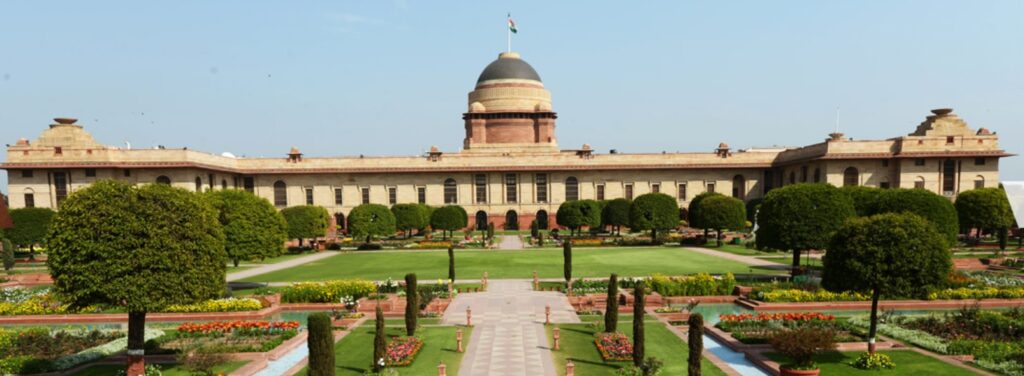
Fifty questions on the past president of India, vice president, presidential elections, and the Rashtrapati Bhavan.
Contents
The fifty questions start here.
The answers start here.
1-5
6-10
11-15
16-20
21-25
26-30
31-35
36-40
41-45
46-50
The Fifty Questions
1. Which President of India was among the last few persons to meet Mahatma Gandhi before his assassination?
2. Who was the first president of India to be elected unopposed, even by one-minute-fame-seekers or footnote-claimants?
3. Which president of India was a professor of economics in Calcutta?
4. Which former governor of the Reserve Bank of India was the opposition candidate for the president of India? What was the significance of the election and the votes polled by him?
5. Where did Sarvepalli Radhakrishnan start his career? Don’t look up Wikipedia. The information there is wrong.
6. Which eminent jurist did Giani Zail Singh defeat when he became the president of India?
7. Who was the oldest while assuming charge as the president of India?
8. Sarvepalli Gopal, in what is perhaps the most candid biography of one’s father, reveals this unusual fact about his father in the first paragraph. What was it?
9. Which was the only country visited by President Rajendra Prasad during his first term of five years? (I reworded this question)
10. Apart from having one Malayali as the president of India, Kerala produced three losers in a row. Who were they?
11. The first presidential candidate put up by the BJP-led NDA was, of course, APJ Abdul Kalam. Who was their candidate in the next election?
12. Who was the last vice president to be elected president of India?
13. Who was the only president of India to have been born in Hyderabad? I mean Hyderabad, now in Telangana, India, not the one in Pakistan.
14. In his first election, Rajendra Prasad defeated this person who studied at the London School of Economics.
15. Which RBI Governor was the grandson of a former president of India?
16. Which president of India faced an allegation of plagiarism? He finally sued for defamation. And they settled the matter out of court.
17. Who was governor of three states before becoming president of India?
18. Who were the only two presidents to die in office?
19. Which president of India had a doctorate in Economics?
20. Which two presidents were on the Executive Board of the UNESCO, one of them even chairing it?
21. Who was the first president of India not cremated at the Raj Ghat premises?
22. Which president of India was the first High Commissioner to Sri Lanka, then called Ceylon?
23. Who was the first former Union Minister to become the president of India?
24. According to his son Sarvepalli Gopal, what incident or series of incidents made his father, Sarvepalli Radhakrishnan, a lifelong propounder of Hinduism?
25. Which First Lady, or wife of a former president of India, was the first to be of foreign origin?
26. Which president of India had a doctorate in law from the University of Cambridge?
27. Which president was the only one to die following a tragic road accident?
28. Which president of India signed the order declaring the Emergency in 1975?
29. Which president of India was finance minister twice, and that too 25 years apart?
30. What was the title of President Rajendra Prasad’s book on the partition of India?
31. Which president of India was, till his nomination, a central board member of the Reserve Bank of India?
32. Which musical instrument was among one of President Abdul Kalam’s few personal possessions?
33. While delivering a lecture at which institution did President Kalam pass away?
34. Where was President Varahagiri Venkata Giri born?
35. Who was the first Acting president of India?
36. Who was the first presidential candidate from a scheduled tribe officially supported by the BJP?
37. Which Indian President was active in the Sinn Fein, which means ‘We Ourselves’, or ‘Ourselves Alone’, the political wing of the Irish Republican Army?
38. Which president of India wrote the book, Labour Problems in Indian Industry?
39. Who was the first former Chief Minister of a State to become the President of India?
40. When was the only time a Supreme Court Chief Justice became the acting president of India, and under what circumstances?
41. Which president of India was a former Vice Chancellor of the Jawaharlal Nehru University?
42. Which president’s memoirs is titled My Presidential Years?
43. Which president of India titled his autobiography rather unusually as I’m My Own Model?
44. What was the middle name of Pratibha Patil, the 12th President of India?
45. Who was the architect of the Rashtrapati Bhavan?
46. When was the construction completed? How long did it take to build the Rashtrapati Bhavan?
47. Who was the first occupant of what we know now as the Rashtrapati Bhavan?
48. In terms of square foot area, acreage of the plot, and rooms, how big is the Rashtrapati Bhavan?
49. Until 15 August 1947, it was known as the Viceroy’s House. From 26 January 1950, it was known as Rashtrapati Bhavan. What was it known as in between?
50. I could not avoid asking one last question that connects central banking. This is in addition to the earlier question on the central bank governor who contested for the post of president of India. So, here goes. What is the link between the Bank of England and the buildings in Lutyens Delhi?
Back to contents
For answers, read on.
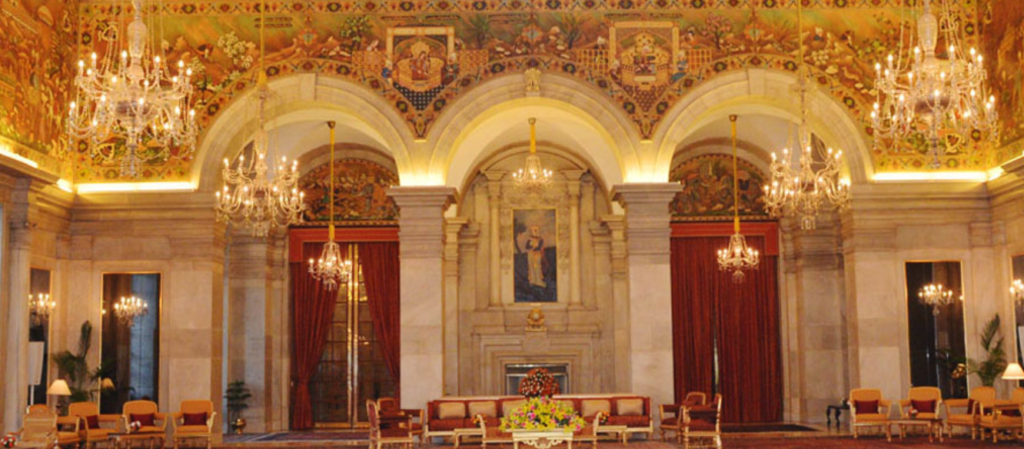
The Answers
1-5
1. Which President of India was among the last few persons to meet Mahatma Gandhi before his assassination?
Please see here for a description of the last hours of Mahatma Gandhi. There is a reference to a Sikh delegation and another one from Punjab meeting the Mahatma sometime between 3.15 and 4 pm on 30 January 1948. What is not mentioned is that one of these delegations included a young and junior politician from Punjab, Giani Zail Singh, later the ninth president of India. This was mentioned around the time Zail Singh became the president.
2. Who was the first president of India to be elected unopposed, even by one-minute-fame-seekers or footnote-claimants?
Neelam Sanjiva Reddy. To be elected unopposed was a condition he put for agreeing to contest. That was in view of his humiliating defeat in 1969 at the hands of V.V. Giri, despite being the official Congress candidate. He remains the only one to be unelected unopposed so far. Abdul Kalam was willing to become the president for a second term only if elected unopposed, but that did not happen.
3. Which president of India was a professor of economics in Calcutta?
Rajendra Prasad. He did his postgraduation in Economics from Presidency College, Calcutta, in 1907. After teaching English for some time, he taught Economics at City College, Calcutta. It would perhaps be more correct to say that he taught economics rather than Professor of Economics. But, there are conflicting references. See here.
4. Which former governor of the Reserve Bank of India was the opposition candidate for the president of India? What was the significance of the election and the votes polled by him?
C.D. Deshmukh contested the presidential election in 1969 as a candidate of the Swatantra Party and Jan Sangh. The official candidate of the Congress Party was Neelam Sanjiva Reddy. VV Giri, an independent candidate supported by Indira Gandhi in the ‘conscience vote’ election, won. He became the only independent candidate to become the president. The total number of votes polled by Deshmukh was greater than the difference between those polled by Reddy and Giri. Interestingly, votes polled by Charan Singh’s party were also critical in Giri’s election.
5. Where did Sarvepalli Radhakrishnan start his career? Don’t look up Wikipedia. The information there is wrong.
Wikipedia says that Radhakrishnan taught at Presidency College, Chennai, from April 1909. He graduated in 1907 from Madras Christian College. The period after that was explained by his postgraduation from the same college. Sarvepalli Gopal’s biography of his father mentioned that Radhakrishnan taught at another college before teaching at Presidency but does not mention the name.
The answer is Victoria College, Palghat (now Palakkad). Those days, Palghat was part of the Madras Presidency. Somewhat late in life, around 1958/59, when Radhakrishnan was Vice President and around 70 years old, he chose to avail of a pension from the Government of India. As per the practice then prevailing, and maybe now too, the pension papers went to the first place of posting for initial processing. My father was honoured to process those papers as Sub Collector, Palghat. He happened to mention this incident one day, unconnected with any other matter we were discussing, perhaps in the belief that I might mention this trivial fact somewhere.
Some records show that Radhakrishnan returned to Victoria College around 1925 as the Principal for about a year. That was before he moved to Oxford University.
Back to contents
6-10
6. Which eminent jurist did Giani Zail Singh defeat when he became the president of India?
Justice Hans Raj Khanna, the author of the basic structure of the Constitution doctrine in the famous Keshavananda Bharati case. Justice Khanna was also the author of the minority judgement in the habeas corpus case during the Emergency. The other four judges were Chief Justice A.N. Ray, Justice M.H. Beg, who later superseded Khanna leading to his resignation, Justice Y.V. Chandrachud, and Justice P.N. Bhagwati.
7. Who was the oldest while assuming charge as the president of India?
The oldest to assume office was K.R. Narayanan at 76-8-28 (years-months-days). Pranab Mukherjee (76-7-14) and R. Venkataraman (76-6-21) came a close second and third. This is what makes an 84-year-old Yashwant Sinha an odd contestant.
8. Sarvepalli Gopal, in perhaps one of the most candid biographies of one’s father, reveals this unusual fact about his father in the first paragraph. What was it?
I added this question in an initial enthusiasm but later thought several times of deleting it. After much self-debate, I rationalised that if Gopal himself could put it, why should I delete it. I believe Gopal’s idea was to put the controversy behind at the beginning of his book so that he could continue writing the rest of the story. Moreover, as Gopal suggests, Radhakrishnan himself was not shy about openly discussing it.
The controversy must have arisen from Radhakrishnan’s younger days, as usually happens in small-town life. And Tiruttani was a small town. Radhakrishnan, born to a humble family, did not resemble the rest of the family in looks or intellectual calibre. The differences became more marked as Radhakrishnan added years to his life. Gopal finally laid to rest what had remained village rumours. Nobody else could have been more brutally honest than the son himself. The first paragraph from the first chapter reads as follows:
Most of the major details about the birth of Sarvepalli Radhakrishnan are uncertain. The official version is that he was born on 5 September 1888 at Tirutani, a very small temple town to the north-west of Madras city, the second son of a poor Brahmin couple, Sarvepalli Veeraswami and his wife Sitamma. However, Radhakrishnan himself was inclined to believe that the date of his birth was in fact 20 September 1887. More important is the doubt whether Veeraswami was his father. Parental responsibility lay, according to village rumour, with an itinerant Vaishnavite official. Sitamma’s brother, who served in the local administration, was thought to have arranged the rendezvous to oblige a superior officer. Credence is lent to the story by the difficulty in believing that Radhakrishnan and his four brothers and sister belonged to the same genetic pool. Intellectual endowment and physical appearance both suggested that Radhakrishnan belonged to different stock. Radhakrishnan himself accepted this version and, critical of his mother’s conduct, always, throughout her long life, kept her at a distance. But he was attached to the man who passed for his father.
Sarvepalli Gopal, Radhakrishnan: A Biography, Oxford University Press, Delhi, 1989, page 10.
Once, I was the only co-passenger of Gopal in DTC (Delhi Transport Corporation) circular bus number 666 from AIIMS to JNU. The unusual lack of passengers for the entire route was because it was an early Sunday morning. I was returning after spending the night with a family friend in Golf Links Colony and Gopal, probably from his alternative residence somewhere in the city.
Both father and son, I believe, had a great personal connection, as narrated to me by Col RVM Menon, ADC to both Radhakrishnan and Dr Zakir Husain. I am digressing, so more on this later.
9. Which was the only country visited by President Rajendra Prasad during his first term of five years? (I reworded this question from which President visited only one country)
I had written about this earlier in my post on who could be the next president of India. Nepal was the only country he visited in his first term. What I had not written then was that according to Durga Das (India – From Curzon to Nehru and After), the veteran journalist and not a great admirer of the first Prime Minister, Nehru told Prasad that he was taking care of the relations with all countries and that there was no need for the President to make any foreign visit. Nehru was the foreign minister throughout the period that he was Prime Minister.
Prasad visited a few more but relatively (then) insignificant countries during his second term. This included Japan, Ceylon, and a few South East Asian countries, including Vietnam, where Ho Chi Minh smeared Prasad’s face with gulal, the day being the occasion of Holi. In Ceylon, Prime Minister Bandaranaike told him: ‘India is our mother country; there can be no dispute between brothers.’
According to Durga Das, ‘Rajendra Prasad was the embodiment of Gandhian humility and spirit of selfless service’ (page 261).
10. Apart from having one Malayali as the president of India, Kerala produced three losers in a row. Who were they?
I made a mistake in saying they were in a row. There was one break in 1992. The three were V.R. Krishna Iyer in 1987 (to R. Venkataraman), T.N. Seshan in 1997 (to K.R. Narayanan), and Lakshmi Sahgal in 2002 (to APJ Abdul Kalam). All three had their roots in the Palakkad district of Kerala.
Back to contents
11-15
11. The first presidential candidate put up by the BJP-led NDA was, of course, APJ Abdul Kalam. Who was their candidate in the next election?
Bhairon Singh Shekhawat.
12. Who was the last vice president to be elected president of India?
K.R. Narayanan.
13. Who was the only president of India to have been born in Hyderabad? I mean Hyderabad, now in Telangana, India, not the one in Pakistan.
Dr Zakir Husain.
14. In his first election, Rajendra Prasad defeated this person who studied at the London School of Economics.
K.T. Shah.
15. Which RBI Governor was the grandson of a former president of India?
M Narasimham, son of Padmavathi, Sarvepalli Radhakrishnan’s eldest daughter.
Back to contents
16-20
16. Which president of India faced an allegation of plagiarism? He finally sued for defamation. And they settled the matter out of court.
Dr S Radhakrishnan. I believe the controversy resulted from local opposition to Radhakrishnan’s appointment as a professor in Calcutta. The claim was that Radhakrishnan’s book borrowed heavily from another book published earlier. The fact was that Radhakrishnan’s draft was with his publisher for at least three years before its publication. His class notes which formed the basis of the book were in circulation even earlier.
17. Who was governor of three states before becoming president of India?
Varahagiri Venkata Giri. I always confused myself about whether Venkata comes first or Varaha.
18. Who were the only two presidents to die in office?
Dr Zakir Husain and Fakruddin Ali Ahmed.
19. Which president of India had a doctorate in Economics?
Dr Zakir Husain. From the University of Berlin. I always thought that his was a conferred doctorate like that of Rajendra Prasad and many other political leaders.
20. Which two presidents were on the Executive Board of the UNESCO, one of them even chairing it?
Dr Sarvepalli Radhakrishnan and Dr Zakir Husain, the former chairing it.
Back to contents
21-25
21. Who was the first president of India not cremated at the Raj Ghat premises?
There was a passing mention in my earlier post on who could be the next president of India. But, I had not initially completed the story. I did fill in later. The source is again Durga Das. When Rajendra Prasad fell ill in 1962, Nehru made arrangements for his funeral. He asked the Home Minister, Lal Bahadur Shastri, to identify a spot as far away from Raj Ghat, where Gandhi was cremated, as possible. Shastri, along with an official, identified a suitable spot.
As things turned out, Rajendra Prasad recovered soon and died in Patna the following February, only after his term ended. He was cremated in Patna itself. Nehru died a year later and was cremated in Shanti Van, next to Raj Ghat. As irony would have it, Shastri was cremated almost two years after Nehru, in the same spot that he identified for Rajendra Prasad. That was named Shanti Van.
22. Which president of India was the first High Commissioner to Sri Lanka, then called Ceylon?
V.V. Giri.
23. Who was the first former Union Minister to become the president of India?
Again V.V. Giri. He was Union Labour Minister.
24. According to his son Sarvepalli Gopal, what incident or series of incidents made his father, Sarvepalli Radhakrishnan, a lifelong propounder of Hinduism?
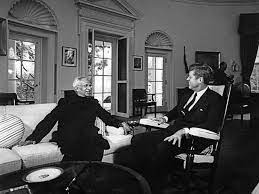
Radhakrishnan, according to Gopal, did not take kindly to the criticism of Hinduism from some of his professors at the Madras Christian College. But his choice of philosophy at the College itself was serendipitous as one of his relatives left behind textbooks on the subject.
Of specific mention were Rev William Meston and Dr Alfred Hogg. Gopal wrote as follows:
In his lectures on ethics to the MA classes Hogg spoke rather disparagingly of the ascetic and otherworldly tendencies of the Bhagavad Gita. These remarks, as well as the general atmosphere of the college, roused Radhakrishnan to examine for himself the religious beliefs of the Hindus. He wondered if it “was the intellectual incoherence and ethical inadequacy of these beliefs which had brought about the political downfall of India.
Sarvepalli Gopal, Radhakrishnan: A Biography, page 16.
For his MA, Radhakrishnan submitted a thesis titled, ‘The Ethics of the Vedanta and Its Metaphysical Suppositions.’ That he chose this topic and it was permitted speaks well of the professors and Radhakrishnan himself. As Gopal explains:
It underlines his moral strength that he should have chosen a subject which was outside the purview of the courses and for which he would have to rely on his own intellectual resources, just as it speaks for the tolerance of Hogg and his colleagues that they permitted Radhakrishnan to wite on this theme, of which they could not have approved, and gave him such guidance as they could. Radhakrishnan’s performance in the BA examination had brought him to Hogg’s notice, and he now received some personal attention. Had Radhakrishnan chosen a topic more to the liking of the university authorities (among whom the missionaries predominated) he might not have dropped to a second class in the final examinations. But Hogg himself was broadminded enough to commend the thesis for its ‘remarkable understanding’ of the main aspects of the philosophical problem and its capacity for handling easily a complex argument, besides its author’s higher than average mastery of good English.
Gopal, as above, pages 16-17.
Radhakrishnan’s professors did well to let him think for himself and appreciated excellence when they saw it. A representative general assessment of Radhakrishnan by Rev William Meston is worth quoting:
He has displayed a power of clear thought, an independence of judgment and a capacity of accurate and rapid assimilation of what he has read which mark him out as possessed of high intellectual bent and attainments. Whatever he deals with goes through the mill of his own mind, and undigested opinion has no place with him.’
Rev William Meston, quoted in Gopal, as above, page 17.
It was for long a mystery to me how Jawaharlal Nehru, who wore his liberal, atheist, and secular credentials on his sleeve, pursued someone like Radhakrishnan, with no known direct involvement in the freedom struggle but had a well-known association with Hinduism, for diplomatic assignments, and the post of Vice President and President. And that when he feared whether Rajendra Prasad travelling abroad might affect India’s secular credentials (again from Durga Das). Was it a weakness for those with a foreign label? Radhakrishnan taught at Oxford and, from 1936 to 1952, held the first Spalding Chair of Eastern Religion and Ethics, the first Asian to hold a chair at Oxford. A few years earlier, he had delivered the Hibbert Lectures in 1930. Or was it Nehru’s prop against other Hindu-leaning figures in Congress? Or was it to balance other eminent figures from Madras, like Sir CP Ramaswamy Iyer, whom he despised, or maybe feared? After all, Paul Appleby, the administration expert Nehru had invited to study India’s public administration, is believed to have remarked that CP was the most capable administrator in India. (For the last, no reference, only word of mouth).
On re-reading Gopal after 30 years, I found the answers in the long prelude, which probably escaped my attention earlier. Quoting Raymond Williams, Ralph Miliband, and others at length, even Chinua Achebe, the Nigerian novelist, Gopal writes of the importance of combining ‘residual and emergent elements … to resist an extraneous culture which was seeking to be dominant.’ In other words, Radhakrishnan’s route was as much one of a freedom struggle as any other. This is the subject of another long post. But, let me conclude by quoting Gopal:
Two men, more than most others, from very different environments devoted their learning, energy and will-power to the task described by Yeats as making ‘national feeling noble and enlightened’. Passionately engaged in their own history and with a new pride in the values and faith of their ancestors, familiar with Western culture but on the edge of it and apart, they made an effort to pour fresh life into ancient teachings by coming to terms with the new impulses created by contact with European thought. These men were the instruments of historical processes and their expression has a representative importance. They were too good as scholars to be limited by the causes of their primary motivation. Contemporary relevance did not preclude universal value, and there was a smooth movement from specific and national concerns to a detached search for general truths. Patriotic involvement could be the base for philosophic detachment. But their writings start with a lively immediacy. Ananda Coomaraswamy, born of English and Sri Lanka Tamil parents and trained in Britain in geology, was reclaimed by the haunting persistence of the past and devoted himself to the service of ideas which for him was the only service possible to render to the cause of Indian freedom. It was the work of artists to make their hearers free, it was they alone who could establish the status of a nation.
The other, from a much humbler background, was Sarvepalli Radhakrishnan.
Gopal, as above, pages 8-9.
25. Which First Lady, or wife of a former president of India, was the first to be of foreign origin?
K.R. Narayanan’s wife, Usha Narayanan, was originally a Burmese national. Her original name was Tint Tint.
Back to contents
26-30
26. Which president of India had a doctorate in law from the University of Cambridge?
Dr Shankar Dayal Sharma.
27. Which president was the only one to die following a tragic road accident?
Giani Zail Singh.
28. Which president of India signed the order declaring the Emergency in 1975?
Fakhruddin Ali Ahmed.
29. Which president of India was finance minister twice, and that too 25 years apart?
Pranab Mukherjee.
30. What was the title of President Rajendra Prasad’s book on the partition of India?
India Divided. Published in 1945, a few years before Indian independence, it summarises the many arguments for and against partition, and the events leading to it, including Jinnah’s fiery speech at Lahore in 1940 calling for Pakistan, a separate state for Muslims. I will write a post on that debate dating back to the 19th century.
Back to contents
31-35
31. Which president of India was, till his nomination, a central board member of the Reserve Bank of India?
Dr APJ Abdul Kalam.
32. Which musical instrument was among one of President Abdul Kalam’s few personal possessions?
Veena, the South Indian Saraswati Veena.
33. While delivering a lecture at which institution did President Kalam pass away?
Indian Institute of Management, Shillong.
34. Where was President Varahagiri Venkata Giri born?
Berhampore in Odisha. That part of present-day Odisha was with the Madras Presidency until Orissa was carved out in 1936 along with parts from Bengal as a separate state. Thus, a linguistic reorganisation was not something which was demanded and happened in the 1950s. It had its antecedents much earlier, giving rise to demands among other people.
35. Who was the first Acting President of India?
V.V. Giri again, following the death of Dr Zakir Husain in 1969.
Back to contents
36-40
36. Who was the first presidential candidate from a scheduled tribe officially supported by the BJP?
P.A. Sangma.
37. Which Indian President was active in the Sinn Fein, which means ‘We Ourselves,’ or ‘Ourselves Alone,’ the political wing of the Irish Republican Army?
V.V. Giri, yet again. Sorry for the skew in favour of my former Governor, whose images I grew up seeing as the governor of my state.
38. Which president of India wrote the book Labour Problems in Indian Industry?
Yet another V.V. Giri. It was first published in 1958.
I have a short anecdote here. This book was one hefty volume in our home library, which I held and examined with a lot of respect, but never read.
One of the period’s well-known and controversial IAS officers in Kerala was Malayattoor Ramakrishnan, who also excelled as a writer, making some of his fiction into popular movies. He belonged to the Special Recruitment batch of 1958, which had no examination (only interview), and he called Japan IAS (Japan was then known for all fake stuff – ‘Made as in USA’ was the label used in Japan-made goods). In one meeting, he probably tried to show off to V.V. Giri, then Governor of Kerala, introducing himself as an IAS officer and a writer. Giri caught hold of him and said, “You are the man I was looking for, why don’t you translate my book into Malayalam?” Ramakrishnan did a quick dematerialising act, but Giri pursued him for a long time, bringing up the subject even after becoming the president.
39. Who was the first former Chief Minister of a State to become the President of India?
Neelam Sanjiva Reddy, Chief Minister of Andhra Pradesh from 1956 to 1960 and 1962 to 1964. This means that he was a chief minister from his early 40s.
40. When was the only time a Supreme Court Chief Justice became the acting president of India, and under what circumstances?
Justice Mohammad Hidayatullah in July-August 1969. After Dr Zakir Husain passed away, V.V. Giri, the Vice President, became the first Acting President. But when V.V. Giri became a candidate for the presidential election, Justice Hidayatullah, Chief Justice of the Supreme Court, became the Acting President. He later became the Vice President from 1979 to 1984.
Back to contents
41-45
41. Which president of India was a former Vice Chancellor of the Jawaharlal Nehru University?
K.R. Narayanan. During 1979-80, before becoming Indian Ambassador to the United States.
42. Which president’s memoir is titled My Presidential Years?
R Venkataraman. Rather a bland title.
43. Which president of India titled his autobiography rather unusually as I’m My Own Model?
B.D. Jatti. He was the Acting President after the death of Fakruddin Ali Ahmed.
44. What was the middle name of Pratibha Patil, the 12th President of India?
Devisingh.
45. Who was the architect of the Rashtrapati Bhavan?
The Hindu carried the same question in a quiz two days back and answered Edward Lutyens the next day. The answer is wrong, at least on one count. First, his first name was Edwin and not Edward. Second, according to the Rashtrapati Bhavan website, it was a joint work of Lutyens and Sir Herbert Baker. Officially, do we have to go by the official website? See below.
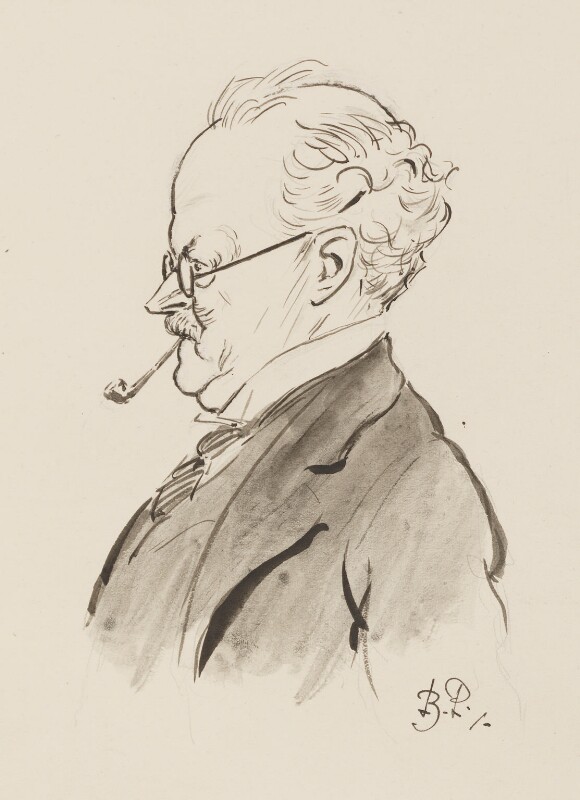
Herbert Baker, as is well known, was a more senior architect than Lutyens and came to India at the suggestion and invitation of the latter, whose reputation lay more in building country houses. Baker did work mostly on public buildings in multiple cities and countries, including England, South Africa, India, Kenya, France, Australia, and Zimbabwe. His designs in India, I believe, were only for the North and South Block buildings and the Parliament House, though he might have given his input for other buildings and the new city’s layout. Even though his contribution was limited, calling that part of Delhi Lutyens Delhi is perhaps a disservice to Baker and his eminence. Maybe that had something to do with the fact that Lutyens and Baker fell out eventually, as we see below.
Back to contents
46-50
46. When was the construction completed? How long did it take to build the Rashtrapati Bhavan?
1929. Eighteen years from 1911 to 1929, says the Rashtrapati Bhawan website. But, I doubt that work started in the same year as when the shifting of the capital from Calcutta to Delhi was announced by King George V, Emperor of India, in the Delhi Durbar of December 1911. I go by another source which puts it at 1913, which seems more accurate, as records show that many deliberations preceded the beginning of the construction.
47. Who was the first occupant of what we know now as the Rashtrapati Bhavan?
Lord Irwin, then Viceroy of India.
48. In terms of square foot area, acreage of the plot, and rooms, how big is the Rashtrapati Bhavan?
200,000 square feet with 340 rooms on four floors, located on 321 acres. The building has 2.5 km of corridors. Source: https://rashtrapatisachivalaya.gov.in/rbtour/about-us
49. Until 15 August 1947, it was known as the Viceroy’s House. From 26 January 1950, it was known as Rashtrapati Bhavan. What was it known as in between?
Government House.
50. As a former central banker, I could not avoid asking one last question that connects central banking. This is in addition to the earlier question on the central bank governor who contested for the post of president of India. So, here goes. What is the link between the Bank of England and the buildings in Lutyens Delhi?
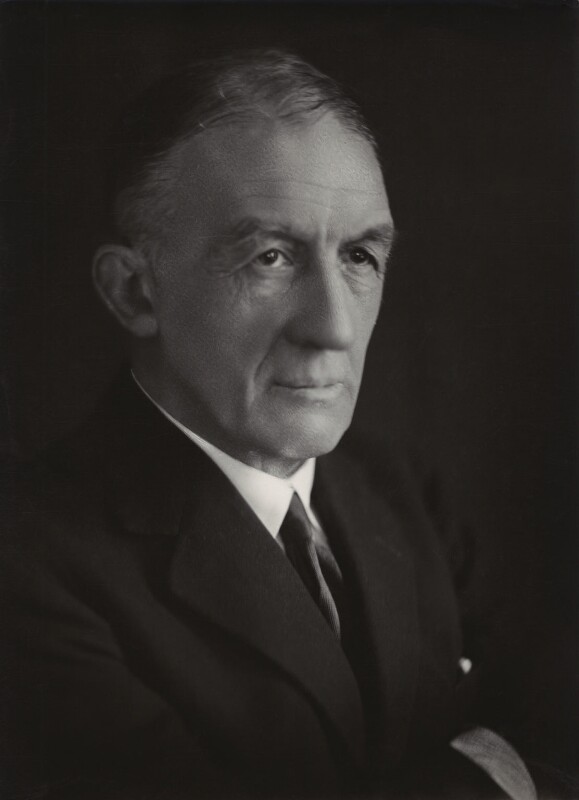
(Courtesy National Portrait Gallery, London)
This question was initially drafted as a common link between the Bank of England and the Rashtrapati Bhavan. I was misled by the Rashtrapati Bhavan website, which said that both Lutyens and Baker were involved in building it. This was against what was widely known that Baker’s role was confined to the North Block, South Block, and the Parliament House. This was confirmed by my friend and former Controller General of Accounts, Mr Mohan Joseph, who wrote a book on these buildings.
The answer is Sir Herbert Baker, who designed the present building of the Bank of England. Both the Bank of England and the Delhi work ended in separate controversies. A discussion on the Delhi controversy and Baker’s spat with Lutyens is here.
John Soane, probably the most famous of the Bank of England architects, designed the earlier building of the Bank of England. Son of a bricklayer, Soane rose to become the professor of architecture at the Royal Academy of Arts and an official architect at the Office of Works. The Bank of England building was his best-known work. Its construction took 45 years, from 1788 to 1833. As it was built on one floor to suit the needs of an earlier era, its pulling down was one of the first significant decisions taken by the newly appointed Montagu Norman, the somewhat cranky but longest-serving governor of the Bank of England from 1920 to 1944. Nikolaus Pevsner, the architectural historian, described the destruction of Soane’s bank as the “greatest architectural crime…of the 20th century”.
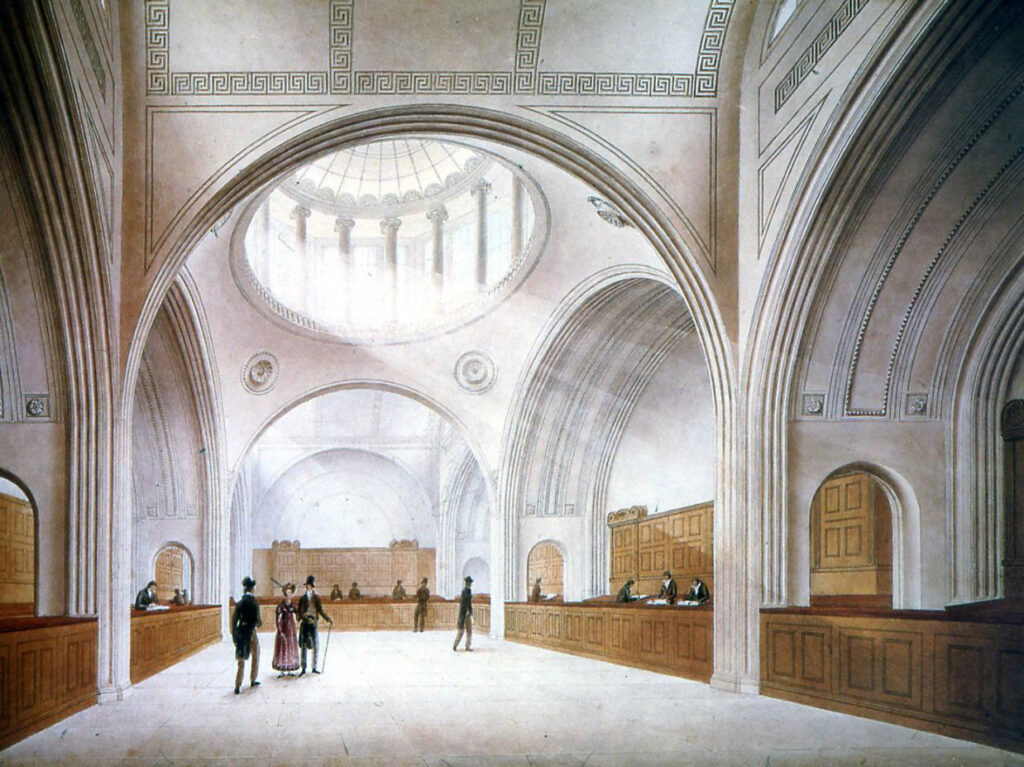
Back to contents
Note
I will be happy to be notified of any errors. Please list it as a comment below.
© G. Sreekumar, July 2022
For periodical updates across my blogs, subscribe for free at the link below:
https://gsreekumar.substack.com/
![]()
A quiz on Indian Presidents – how boring I thought, when I read the heading.
But quite the contrary – the questions and answers made very interesting reading !